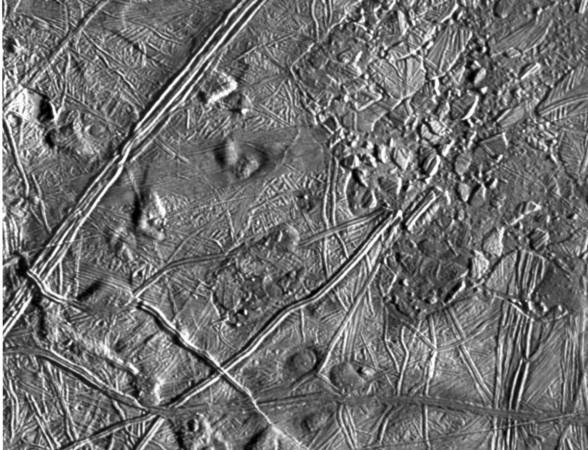
The ice moons of Jupiter and Saturn have long captivated astronomers and exobiologists. According to scientific models, it is predicted that under the kilometers-thick ice of Europa, Ganymede, Titan, and Enceladus, there could be oceans teeming with life.
NASA has found out that a human colony on Mars could be wiped out in minutes!
Now, NASA has reported that it is one step closer to finding out if life does indeed exist under the ice on the Jovian moon Europa.
NASA's Science Definition Team (SDT) has reported that a Europa Lander, launched with the agency's Space Launch System (which will hopefully be operational by 2024), will be ejected towards Europa during a probe flyby. The journey to Jupiter would take approximately five years, so we're looking at data returning by 2031!
The Lander will be loaded with equipment specifically meant to locate life forms beneath the moon's ice crust, and would include an "organic compositional analyzer," a microscope system and a "vibrational spectrometer".
Scientists believe that if life can exist in Lake Vostok, which lies under 13,000 ft of Antarctic ice, it could also exist on Europa, where conditions are similar to Vostok. Only microbes have been found from water samples taken from Lake Vostok.

The Lander would traverse Europa's surface for 20 days and take samples from at least four inches beneath the Europan ice. The Lander would be launched from the probe along with a Carrier Relay Orbiter (CRO), which will stay in orbit relaying data from the Lander back to Earth.
NASA scientists believe that Europan radiation levels would limit the CRO lifespan to no more than 30 days.
NASA already has a Europa flyby mission, the Europa Clipper, in the works and hopes to launch it in the early part of the next decade.
"Along with the analytical suite for detailed analyses of samples, the Europa Lander model payload also includes a pair of color stereo imagers for examining the landing site in 3D, and a seismic package for determining Europa's ice shell and ocean thickness through acoustic monitoring of cracking events in the ice shell," the SDT report states.
Should the Europa Lander return conclusive data of microbial life on the Jovian moon, then scientists and exobiologists can turn their attention to Enceladus, an icy moon of Saturn also speculated to have a large ocean under a thick layer of ice.

















